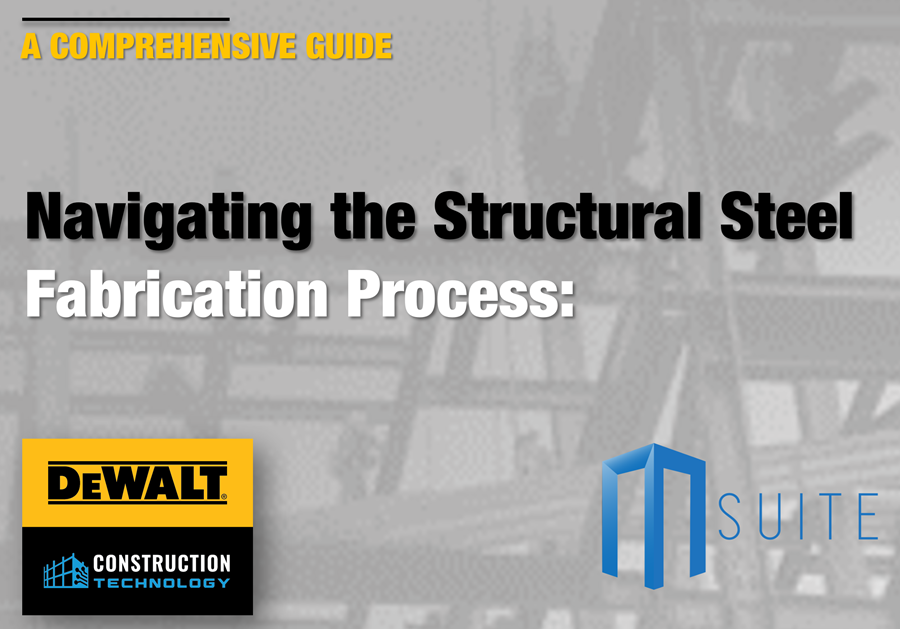Structural steel fabrication is a complex and crucial process that involves multiple stages to create durable and reliable structures. This article features the seven main steps of the process and highlights their significance. We will also feature key considerations and discuss best practices for a successful fabrication project.
Understanding Structural Steel Fabrication:
Structural steel fabrication involves the construction or reconstruction of metal structures using steel. The process includes cutting, bending, and assembling the fabricated steel for various purposes, such as building bridges, housing, factories, and large structures. The choice of structural steel is driven by its strength, heat resistance, ease of fabrication, and exceptional durability.
Main Steps of Structural Steel Fabrication:
- Design Preparation:
The initial step in the structural steel fabrication process is design preparation. This phase involves creating project drawings and specifications, leading to the development of a detailed Bill of Material (BOM) and Bill of Operations (BOO). These documents provide crucial information for purchase and production planning. MSUITE BIM is cutting-edge design automation software tailored for dynamic mechanical, electrical, and plumbing contractors. It enhances design quality, eliminates the tedium of dimensioning and tagging, and boosts productivity throughout the design process.
- Material Acquisition:
Following design preparation, the detailed BOM guides the acquisition of necessary materials. The steel is typically ordered from a supplier in standard lengths or pre-cut based on project requirements. Material procurement is a pivotal step before the fabrication process begins.
- Steel Cutting and Drilling:
Utilizing advanced CNC machines, the steel is cut to the correct length and drilled to create necessary project holes. Various cutting methods, including circular saws, laser cutters, waterjets, or plasma cutting machines, are employed to achieve precision.
- Bending and Welding:
After cutting and drilling, the steel undergoes bending processes such as section bending, roll bending, plate bending, or tube bending to achieve the desired shape. Subsequently, the steel components are welded together using manual metal arc (MMA) welding or metal active gas (MAG) welding, adhering to strict quality management conditions.
- Quality Check:
Ensuring the fabricated steel meets specifications involves a comprehensive quality check. This includes visual inspections, dimensional inspections, mechanical tests, and non-destructive testing (NDT) to detect hidden defects and cracks. Quality control is essential to maintain structural integrity.
- Finishing:
Upon successful quality checks, the steel undergoes sandblasting and painting to protect against corrosion. This finishing process occurs before installation, reducing overall installation time and cost.
- Delivery, Assembly, and Installation:
In the final stage, the fabricated steel components can be pre-assembled (or not pre-assembled) and delivered to the construction jobsite for installation according to the project’s requirements. Assembly methods may include bolting, riveting, or welding, with meticulous attention to accuracy. Installation often involves heavy-duty cranes, and safety measures outlined below.
Critical Considerations for a Successful Structural Steel Fabrication:
- Project Planning:
To ensure project success, develop a detailed plan, including blueprints, schedules, and budgets. In the planning phase, consider factors like traffic type and weight.
- Understanding Customer Requirements:
Thoroughly understand the customer’s needs, including the structure’s purpose, load-bearing capacity, and environmental conditions. Regular communication and feedback ensure customer satisfaction.
- Analyzing Company Capabilities:
Conduct a Strengths, Weakness, Opportunity, Threats (SWOT) analysis to assess the company’s strengths, weaknesses, and available resources. Identify expertise, competencies, and financial resources to ensure project feasibility.
- Shortlisting Vendors:
Select certified vendors with relevant certifications to provide necessary materials promptly. Certifications from authorities like AISC, AWS, ISO, and NICET are crucial.
- Analyzing Project Progress:
Monitor project progress closely through regular reports from forepersons and shop floor workers. Identify and address any issues promptly during project meetings.
- Ensuring Quality and Safety:
Implement a quality control plan, inspecting incoming materials, work in progress, and finished products. Adhere to safety guidelines to protect workers during the fabrication process.
- Utilizing Shop Management Technology
MSUITE serves as a comprehensive solution for managing the structural steel fabrication process in the shop, offers a range of capabilities to enhance efficiency and coordination. The platform’s project planning and scheduling capabilities allow users to create detailed plans, allocate tasks, and set timelines for each fabrication stage.
The system facilitates robust document management, enabling teams to store and access essential project documents, including shop drawings and specifications. MSUITE supports material management by tracking orders, deliveries, and inventory in real time, ensuring seamless coordination of the fabrication workflow. Shop floor tracking tools provide visibility into the progress of steel cutting, drilling, bending, welding, and other processes. Integrated into MSUITE, quality control processes ensure that fabricated steel components meet specified standards through inspection checklists and non-destructive testing procedures. MSUITE fosters communication and collaboration among team members, promoting efficient coordination. Reporting and analytics features generate insights into key performance indicators, allowing for data-driven decision-making and identifying ways to improve on future projects.
Additionally, MSUITE supports integration with CNC machines for streamlined data transfer and reduced errors. Safety management features within the platform ensure adherence to safety guidelines during fabrication. MSUITE is vital in optimizing the structural steel fabrication process, from project planning to final assembly in the shop. For specific guidance, users are advised to refer to the latest documentation or contact MSUITE’s customer support.
Conclusion:
In conclusion, the structural steel fabrication process is a sophisticated endeavor forming the backbone of various industries. Each step contributes to creating robust structures, from meticulous design preparation to the final assembly and installation on-site. The utilization of advanced shop management software, industrial equipment, quality control measures, and a focus on safety underscores the importance of this intricate process in modern construction and industrial sectors.
As the demand for fabricated structural steel continues to grow, the future of structural steel fabrication remains central to building safer, more durable, and efficient structures.



 The system facilitates robust document management, enabling teams to store and access essential project documents, including shop drawings and specifications. MSUITE supports material management by tracking orders, deliveries, and inventory in real time, ensuring seamless coordination of the fabrication workflow. Shop floor tracking tools provide visibility into the progress of steel cutting, drilling, bending, welding, and other processes. Integrated into MSUITE, quality control processes ensure that fabricated steel components meet specified standards through inspection checklists and non-destructive testing procedures. MSUITE fosters communication and collaboration among team members, promoting efficient coordination. Reporting and analytics features generate insights into key performance indicators, allowing for data-driven decision-making and identifying ways to improve on future projects.
The system facilitates robust document management, enabling teams to store and access essential project documents, including shop drawings and specifications. MSUITE supports material management by tracking orders, deliveries, and inventory in real time, ensuring seamless coordination of the fabrication workflow. Shop floor tracking tools provide visibility into the progress of steel cutting, drilling, bending, welding, and other processes. Integrated into MSUITE, quality control processes ensure that fabricated steel components meet specified standards through inspection checklists and non-destructive testing procedures. MSUITE fosters communication and collaboration among team members, promoting efficient coordination. Reporting and analytics features generate insights into key performance indicators, allowing for data-driven decision-making and identifying ways to improve on future projects.



